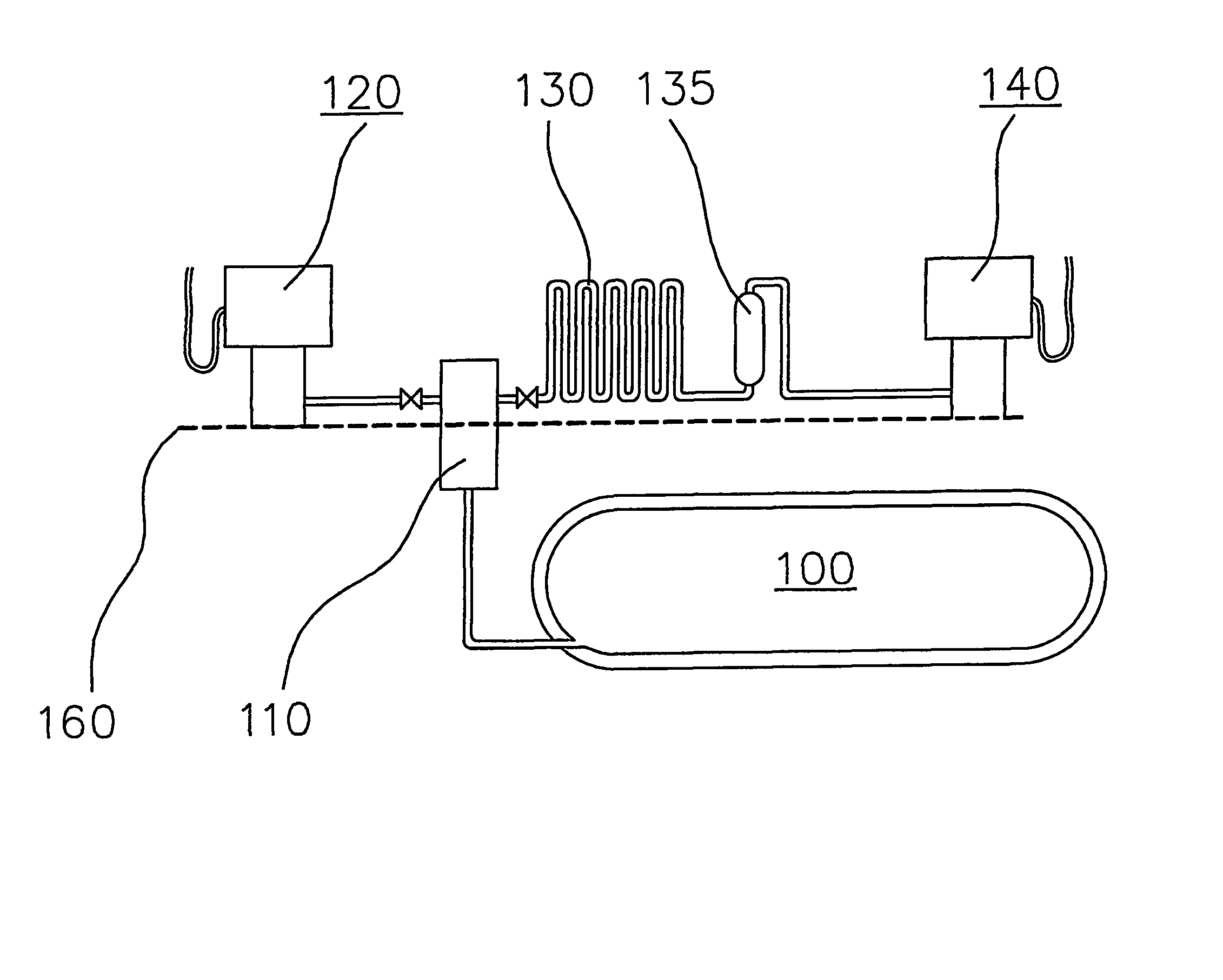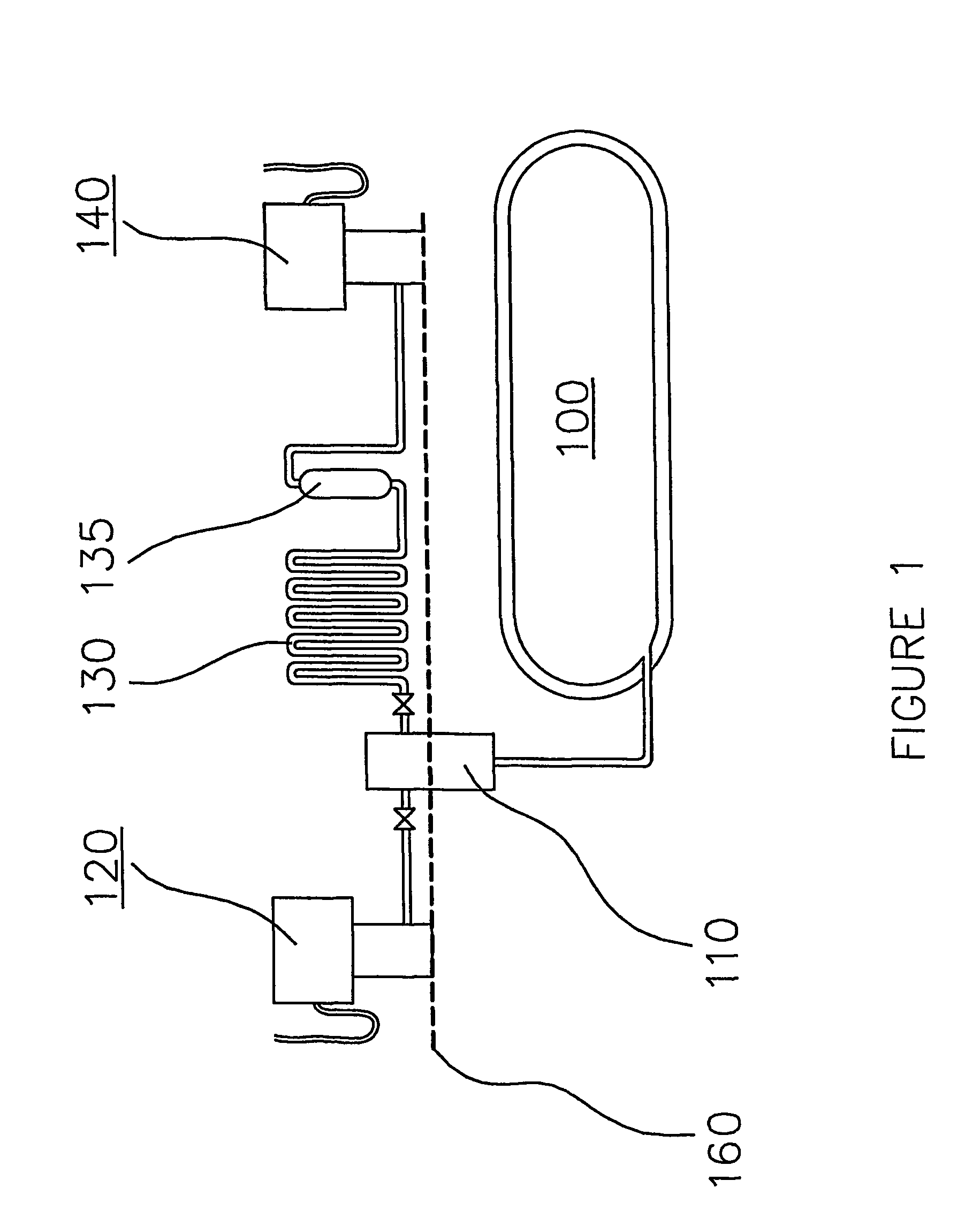Combined liquefied gas and compressed gas re-fueling station and method of operating same
a liquefied gas and compressed gas technology, applied in the direction of positive displacement liquid engine, container discharging method, packaged goods type, etc., can solve the problems of increasing the weight of the storage tank, requiring additional equipment, and adding extra heat into the storage tank, so as to reduce the cost of capital and maintenance costs
- Summary
- Abstract
- Description
- Claims
- Application Information
AI Technical Summary
Benefits of technology
Problems solved by technology
Method used
Image
Examples
Embodiment Construction
)
[0055]Referring to FIG. 1, a combined liquefied gas and compressed gas re-fueling station comprises LNG storage tank 100, fuel pump unit 110, LNG dispenser 120, heat exchanger 130 and CNG dispenser 140. Odorizer 135 is typically required to add an odor to CNG so as to comply with safety regulations. Dashed line 160 indicates ground level.
[0056]In a preferred embodiment, LNG storage tank 100 is buried underground. As noted above, since LNG is stored at cryogenic temperatures (typically less than −175° F. (−115° C.) for LNG), an advantage of burying LNG storage tank 100 compared to a tank situated above ground, is that there is much less temperature variation around underground LNG storage tank 100. Another advantage is that an underground storage tank conserves more space above ground for improved accessibility of vehicles to the dispensers. Building codes also typically require less distance between an underground storage tank and an adjacent property, compared to an above-ground s...
PUM
| Property | Measurement | Unit |
|---|---|---|
| pressures | aaaaa | aaaaa |
| pressures | aaaaa | aaaaa |
| temperatures | aaaaa | aaaaa |
Abstract
Description
Claims
Application Information
 Login to View More
Login to View More - R&D
- Intellectual Property
- Life Sciences
- Materials
- Tech Scout
- Unparalleled Data Quality
- Higher Quality Content
- 60% Fewer Hallucinations
Browse by: Latest US Patents, China's latest patents, Technical Efficacy Thesaurus, Application Domain, Technology Topic, Popular Technical Reports.
© 2025 PatSnap. All rights reserved.Legal|Privacy policy|Modern Slavery Act Transparency Statement|Sitemap|About US| Contact US: help@patsnap.com



